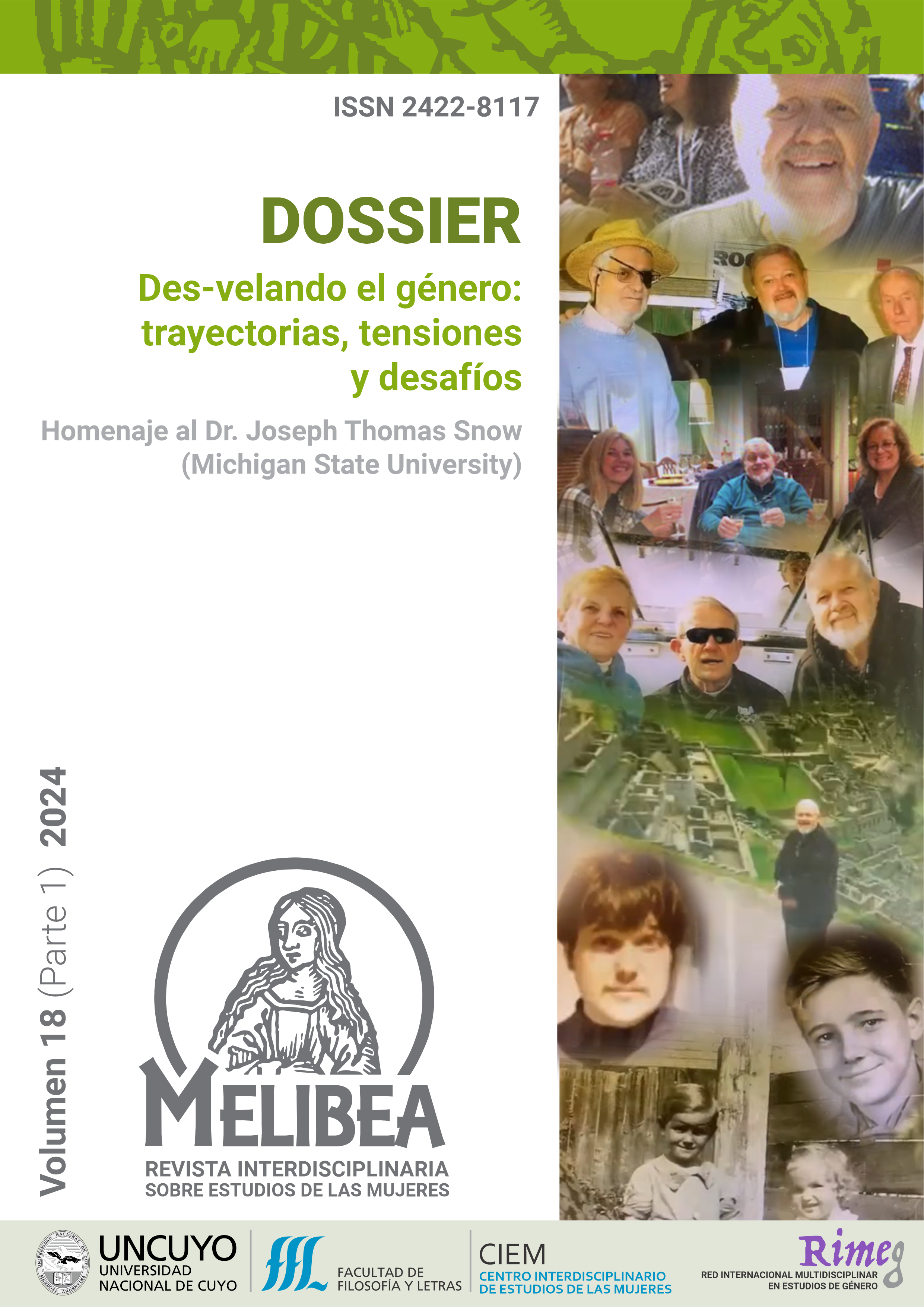he Spaces of Mary of Egypt’s Lust in Medieval Hispanic Verse and Prose (MSS. ESC. K-III-4 and h-I-13)
Keywords:
Lust, Medieval Prostitution, St. Mary of Egypt, Mobility, SinAbstract
The western side of the story of Saint Maria Egipciaca is attested in two Hispanic versions of the legend of the repentant prostitute, found in Esc. MSS. K-III-4 and hI-13. The comparison of these versions, respectively in verse and prose, allows us to study the stylistic transformations undergone by the stages of the saint's life, from her youth to her old age, which unfold over time and take on specific spaces representative of both sin and penitence. If the desert is the space that refers the penitent stage, since the more than forty years she spends there are what define the sanctity she will attain, the spaces of lust as the sin of her youth are indicative of the mobility of sin in the period, both for its constitutive quality based on constant movement and for its voluble character, as opposed to the stability that its purgation will require, as will be studied in the present work.
References
Fuentes
Zubillaga, C. (2008). Antología castellana de relatos medievales (Ms. Esc. h-I-13). SECRIT.
Zubillaga, C. (2014a). Poesía narrativa clerical en su contexto manuscrito. Estudio y edición del Ms. Esc. K-III-4 (“Libro de Apolonio”, “Vida de Santa María Egipciaca”, “Libro de los tres reyes de Oriente”). SECRIT.
Referencias bibliográficas
Beresford, A. (1997). “Encendida del ardor de la luxuria”: Prostitution and Promiscuity in the Legend of Saint Mary of Egypt. En A. M. Beresford (Ed.),“Quien hubiese tal ventura”: Medieval Hispanic Studies in Honour of Alan Deyermond (pp. 45-56). Department of Hispanic Studies, Queen Mary and Westfield College.
Cárdenas, A. J. (1996). The Desert Experience as Other World in the Poem Vida de Santa Maria Egipciaca. Romance Languages, 7, 413-418.
Cresswell, T. (2010). Towards a politics of mobility. Environment and Planning D: Society and Space, 28, 17- 31.
Delgado, E. E. (2003). Penitencia y eucaristía en la conformación de la vertiente occidental de la leyenda deSanta María Egipcíaca: un paradigma de negociación cultural en la Baja Edad Media. Revista de poética medieval, 10, 25-55.
Foster, D. W. (1967). De Maria Egyptiaca and the Medieval Figural Tradition. Italica, 44(2), 135-143.
Francomano, E. C. (2014). “Taking the Gold Out of Egypt”: Prostitution and the Economy of Salvation in the Vida de María Egipciaca. Hispanic Review, 82, 397-420.
García Herrero, M. (1996). El mundo de la prostitución en las ciudades bajomedievales. Cuadernos del CEMYR, 4, 67-100.
Gracia, P. (2001). Simbología de las aguas en la Vida de Santa María Egipciaca. En M. J. Alonso García, M. L. Dañobeitia Fernández y A. R. Rubio Flores (Eds.), Literatura y cristiandad. Homenaje al profesor Jesús Montoya Martínez (pp. 203-208). Universidad de Granada.
Otis, L. L. (1985). Prostitution in Medieval Society: The History of an Urban Institution in Languedoc. UP.
Robertson, D. (1980). Poem and Spirit. The Twelfth-Century French Life of saint Mary the Egyptian. Medioevo mRomanzo, VII(3), 305-327.
Scarborough, C. L. (2012). El desierto como sitio de reconciliación en la Vida de Santa María Egipciaca. En P. Botta (Coord.), Rumbos del hispanismo en el umbral del Cincuentenario de la AIH (vol. II, pp. 138-144). Bagatto Libri.
Snow, J. T. (1990). Notes on the Fourteenth-Century Spanish Translation of Paul the Deacon’s Vita Sanctae Mariae Aegyptiacae, Meretricis. En J. E. Connolly, A. Deyermond y B. Dutton (Eds.), Saints and their Authors: Studies in Medieval Hispanic Hagiography in Honor of John K. Walsh (pp. 83-96). Hispanic Seminary of Medieval Studies.
Walker, R. (Ed.). (1972). Estoria de Santa María Egiçiaca. University of Exeter.
Zubillaga, C. (2014b). Pervivencia, traducción y resignificación de la leyenda de Santa María Egipciaca en la literatura europea medieval: estudio de las vidas francesa e hispánica de la santa frente a la tradición oriental previa. Exlibris, 3, 66-77.
Zubillaga, C. (2015). Configuración espacio-temporal de la santidad femenina medieval en la Vida de Santa María Egipciaca. Cuadernos de Investigación Filológica, 41, 33-45.
Zubillaga, C. (2016). El desierto en la leyenda de Santa María Egipciaca. Olivar, 17(26). http://www.olivar.fahce.unlp.edu.ar/article/view/OLIe016
Zubillaga, C. (2018). Categorías espaciales y dicotomías jerárquicas en la definición de la santidad femenina de María Egipciaca. Scripta Mediaevalia. Revista de Pensamiento Medieval, 11, 97-115.
Downloads
Published
How to Cite
Issue
Section
License

This work is licensed under a Creative Commons Attribution-NonCommercial 4.0 International License.
Esta obra está bajo una Licencia Creative Commons Atribución-NoComercial 4.0 Internacional.
Los/as autores/as que publican en esta revista están de acuerdo con los siguientes términos:
1. Los/as autores conservan los derechos de autor y garantizan a la revista el derecho de ser la primera publicaci´´ón del trabajo bajo una licencia Creative Commons Atribución-NoComercial 4.0 Internacional. Por esto pueden compartir el trabajo con la referencia explícita de la publicación original en esta revista.
2. Revista Melibea permite y anima a los autores a difundir la publicación realizada electrónicamente, a través de su enlace y/o de la versión postprint del archivo descargado de forma independiente.
















